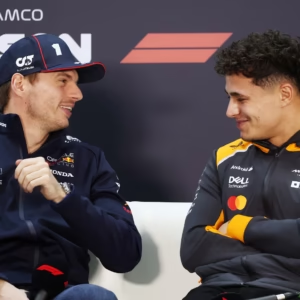After bidding farewell — at least for this year — to the Circuit Gilles Villeneuve, it’s time to cross the ocean and look forward to the next stop. Awaiting us is Spielberg, home of RedBull Racing. From the historical Wall of Champions to the RedBull Ring, the Formula 1 calendar abounds with world-famous venues that marked the history of the sport.
Montréal: the circuit of records
Renamed in honour of one of Ferrari’s most beloved drivers following his death in 1982, the track is located on the island of Notre-Dame. Montréal is the city of first times: first win for Gilles Villeneuve at his home race in 1978, first (and only) win for Jean Alesi in 1995, first win for Lewis Hamilton in 2007, first appearance ever for one of the cornerstones of our sport, the Safety Car, in 1973.
The circuit is also remembered for hosting the longest race in the history of Formula 1: the 2011 Canadian GP hit the record of 4 hours, 4 minutes, and 39 seconds, after a disastrous downpour that forced a delay of over one hour and a half.
Max equals Ayrton
History was made once again at the Circuit Gilles Villeneuve this year. After a dominant – yet solitary – race, at the chequered flag Max Verstappen took his 41st race win, equalling the legendary Ayrton Senna. While the Brazilian set this outstanding record from 162 race starts, it took Max Verstappen 171 races to match the achievement.
Records are there to be broken, and after his 6th win in the past eight races Max Verstappen doesn’t seem to want to stop. His win at the 2023 Canadian Grand Prix also marks 100th race win for RedBull Racing in Formula 1. The team now stands behind McLaren (183 wins), and Ferrari (242 wins).
The Wall of Champions
When thinking of the Circuit Gilles Villeneuve, one cannot not think of the Wall of Champions. Located in the last chicane of the circuit, the myth of the Wall of Champions goes back to 1999, when Hill, Schumacher and Villeneuve collided with the wall. What makes the hairpin particularly tricky it’s the braking from their highest speeds after barrelling down the straight. It’s been the site of numerous infamous crashes, among which Sebastian Vettel’s (2011) and Jenson Button’s (2005) ones.
Next Up: Spielberg
After a week’s break, Formula 1 flies across the Atlantic Ocean to land in the home of the reigning champions: the RedBull Ring. The track is the fourth shortest in the calendar, after Monaco, Mexico and Brazil. The height of the circuit (660 meters above sea level) will surely be influencing the single-seaters power units and cooling systems. There isn’t anything to be taken for granted in Austria!
After hosting the F1 Sprint format for the first time last year, the RedBull Ring will be packed with action thanks to the new revised format.
Sprint Weekend
This brand-new Sprint Race format removes the FP2 and FP3 sessions. In fact, Friday will see a single hour of practice, while the grid for Sunday’s Grand Prix will be decided on Friday evening with the traditional qualifying session.
On Saturday morning, the drivers will compete in the Sprint Shootout – a 45-minute qualifying session which sets the grid for Saturday afternoon’s Sprint.
The 2023 Austrian Grand Prix will host the second Sprint Race of the six scheduled in the calendar, (Azerbaijan GP, Austrian GP, Belgian GP, Qatar GP, US GP, Sao Paulo GP) doubling the number from the three held in 2021 and 2022.
The 2023 Austrian Gran Prix sure promises to be an action-packed weekend, and we can’t wait to… take the bull by the horns!



